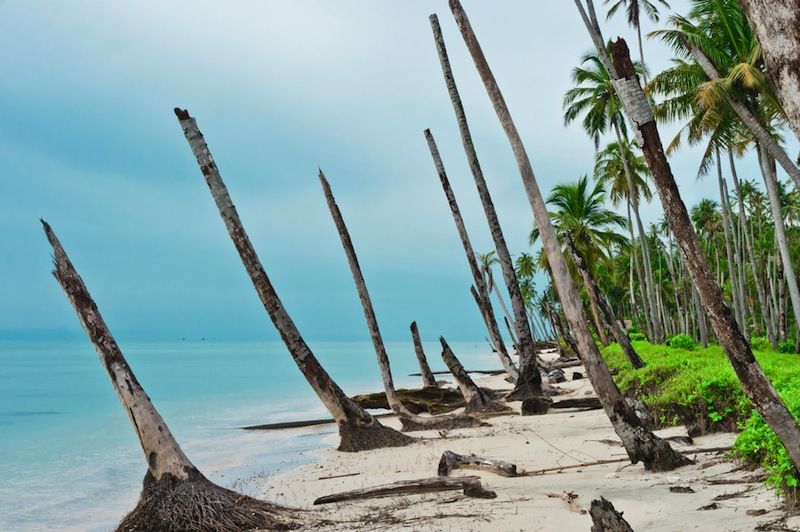2004 Indian Ocean Tsunami Had Deadly Predecessors

PASADENA, Calif. — Indian Ocean tsunamis destroyed one of the world's most important silk-route ports in the 15th century, new research finds.
Yet there is little record of this devastating tragedy passed down in stories or written records on the island of Sumatra. Researchers now think the history vanished because two tsunamis decimated the Sumatran coast, leaving few people behind to pass on a warning.
"Probably not enough people survived to rebuild," said study author Kerry Sieh, director of the Earth Observatory of Singapore.
The new findings were presented last week at the annual meeting of the Seismological Society of America.
Sieh and his colleagues have discovered evidence that several tsunamis occurred along the Sumatran coastline over the past several thousand years. There are layers of sand left behind by tsunamis in protected coastal caves, where waves don't wash away the deposits. Corals killed by the turbulent waves help researchers precisely date the earlier events. [10 Tsunamis That Changed History]
The most recent tidal waves were a double-whammy that struck in 1394 and 1450. Archaeologists working with Sieh have now found smashed pottery sherds, broken gravestones and other artifacts in towns hit by the tsunamis, from when the region was a refueling stop on the maritime silk route. More goods traveled by ship than by land on the ancient silk route between the East and the West.
The study took place near the remnants of an ancient city called Lamuri (also known as Lambri) on northern Sumatra near present-day Aceh Silk-route ships heading west from China or east from India would stop in Lamuri to load up on trade goods, fresh water and food, Sieh said.
Sign up for the Live Science daily newsletter now
Get the world’s most fascinating discoveries delivered straight to your inbox.
"Aceh was important from at least the 11th century on," Sieh said. "It would have been a very major port."
All mentions of Lamuri vanished from historical records in other trading countries after the 15th century. Trading moved to protected ports on the eastern side of the island. The northern tip of the island didn't recover until about A.D. 1520, when people who founded the current Sultanate of Aceh resettled there. The newcomers reoccupied the beaches and bays that had been wiped clean by the tsunamis, setting the stage for another tragedy after the next earthquake, Sieh said.
"A whole new culture came in, and they didn't know what had previously happened," Sieh told Live Science.
On Dec. 26, 2004, the Sumatra earthquake and tsunami ravaged 14 countries and killed more than 165,000 people in Aceh alone. Aceh, on the northern end of Sumatra, has rebuilt its damaged coastal communities in the same locations. However, the island is now part of a new tsunami warning network for the Indian Ocean.
"They're going to get hit really strongly again," Sieh said.
The research team continues to amass archaeological evidence that past tsunamis destroyed western Sumatra's thriving communities. The scientists are systemically combing the coastline for signs of vanished villages. The extensive survey will show how widespread the damage was.
Follow Becky Oskin @beckyoskin. Follow Live Science @livescience, Facebook & Google+. Originally published on Live Science.












